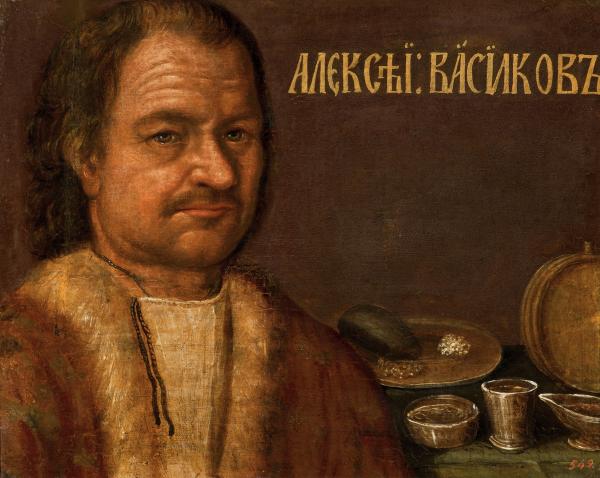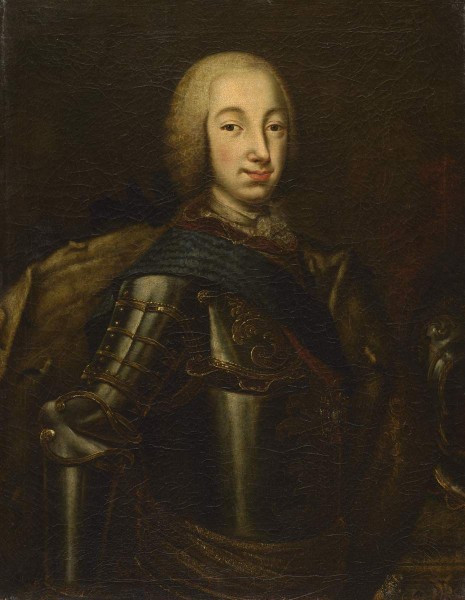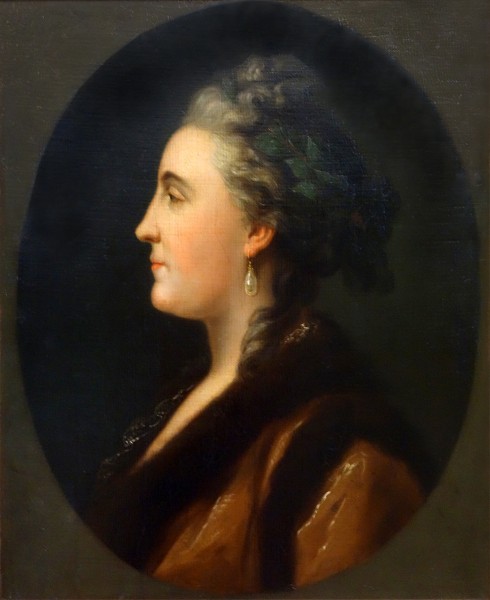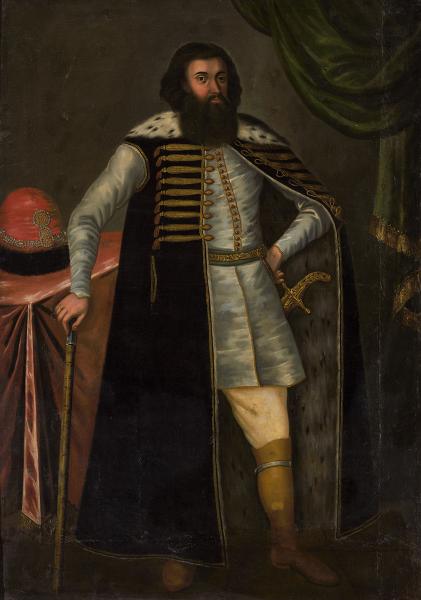The artist is unknown

Alexey Vasilkov (middle name and years of life are unknown). Since the late 1660s-the clever order of the barrel case, from 1700 he served in the weapons chamber, in 1715-the clerk of the weapons office. Peter I. Time and environment. SPb, 2015. With. 124.
Undoubtedly, unlike images m. F. Naryshkina, me. F. Turgenev, a. M. Apraksina, f. And. Verigina and n. M. Fat-Setzin, portrait of Alexei Vasilkov written after August 30, 1698. It is known that in 1699 and 1705, Peter I published two “decrees on bradobroty”, but the close associates of the king hardly needed reminders – on the portrait of the cornflowers are depicted with small, like Peter, antennae by antennae. In 1700, the clever order of the Store, Alexei Vasilkov continued to serve in the weapons chamber in subordination to the well -known “profiter” appointed by the clerk in the same year (responsible for finding income for the sovereign treasury.) AND. AND. Kurbatova, who wrote to the tsar: “The clerk Alexei Vasilkov, who has weapons, zeal, the sovereign, is truly not dangerous, I am dangerous from the negligence of all his drunkenness”. The portrait seems to be a literal illustration of this letter, representing a salty cucumber depicted against the background of a barrel, spells and plates with salty cucumber. The zeal of the “servant of Bachus” as a whole corresponded to the morals and customs.
“Preobrazhenskaya series” – the rarest monument of early secular art in Russia. Her characters were traditionally called images of the jesters of Peter I. The name “Preobrazhenskaya series” was proposed. M. Moleva and e. M. Belyutin and arose in connection with the inventory of the Preobrazhensky Palace near Moscow, which included portraits (“persons”) Yakov Fedorovich Turgenev, Andrei Brownie, Matvey Filimonovich Naryshkin, as well as the “Picture of Alexei Lenin with Cloral”. The closest associates of Peter the Time “I began glorious affairs”, they were participants in the unique association. Documents drawn up by the king himself testify to what it was called “the most crazy crazy cathedral of the most all-food prince-papa”. Researchers unanimously attribute the beginning of “cathedrals” by the end of the 1680s-the beginning of the 1690s. The basis of the series is eight portraits, the researchers supplemented it with a portrait of the “First Russian Soldier” by Sergey Leontyevich Bhavostov. However, apparently, the portraits were at least eleven, in the inventory of 1739 the “person of Prince Fedor Yuryevich Romodanovsky”, “Person of Nikita Moiseevich Zotov”, “Person of Ivanovich Buturlin”, “The character of the fool Timokhi”, whose location is unknown, were also included in the inventory of 1739.
It is believed that the series was created for the new palace, built in 1692 on the shore of Yauza near the soldiers’ courtyards of the Preobrazhensky regiment. Portraits were there, apparently, until the last quarter of the 18th century, and when the palace was dilapidated, they were transported to St. Petersburg, stored in the IE meeting, and then were transferred to the Gatchinsky Palace. In 1929, almost the entire “Preobrazhenskaya series” entered the Russian Museum, but two years later, portraits of the stolnik and. AND. Shchepothev and unknown in a brown fur coat are transferred from timing to the GTG.
The main one for the dating of all known portraits of the series is the following historical fact: images of bearded people (Turgenev, Naryshkin or Verigin) could be executed until August 26–30, 1698, when Peter returned from abroad began to cut his beards with his boyars who gathered for the meeting king in the same Preobrazhensky Palace. Thus, the dating of the series is the most likely-the 1690s (until 1698). Most researchers believe that the portraits of the series were written by Russian masters, painters of the arms chamber, whose services Peter used especially widely in the 1690s-early 1700s.


